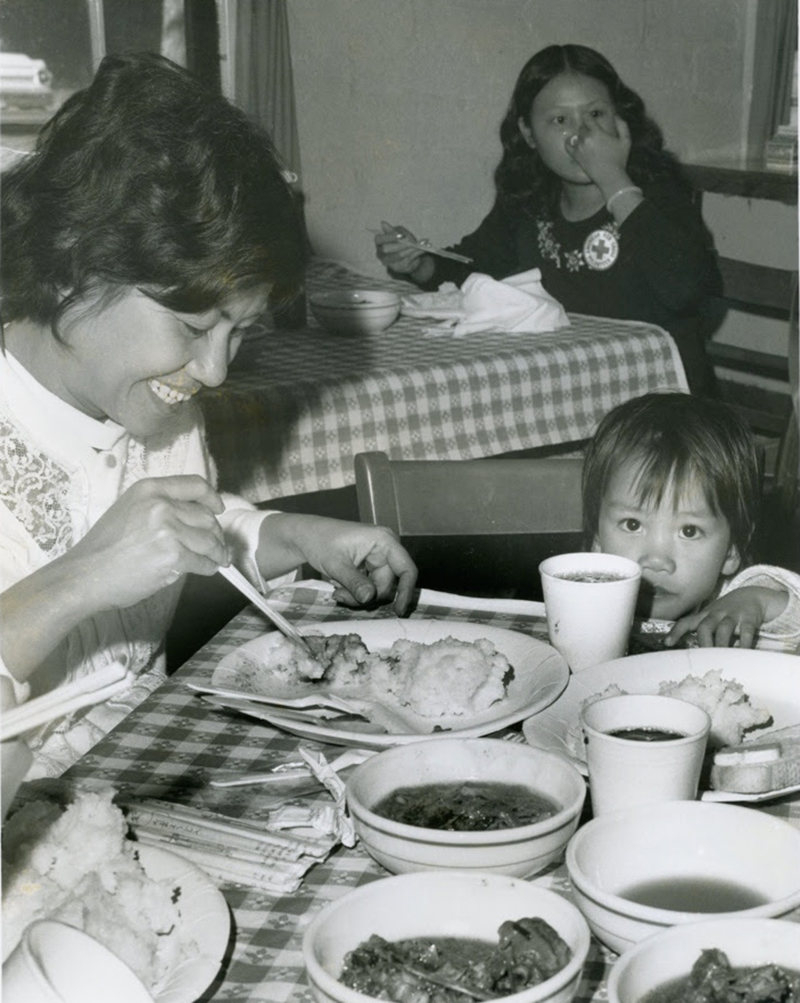A new exhibition at the Washington State History Museum explores the journeys of refugees from Vietnam, Laos and Cambodia who resettled in Washington after the Vietnam War, reflecting on 50 years since the 1975 Fall of Saigon.
“Our Voices: Stories from Washington’s Southeast Asian Refugees” runs Nov. 29, 2025, through July 12, 2026. The show opens as Washington is now home to more than 100,000 Vietnamese Americans, making it the nation’s third-largest Vietnamese diaspora.
The exhibit looks back to 1975, when Gov. Daniel J. Evans invited 500 Southeast Asian refugees to begin new lives in the state. Many fled wartime destruction or persecution for opposing ruling regimes or assisting the United States, seeking safety and opportunity in the Pacific Northwest.

Mealtime at Camp Murray (Courtesy of Washington State Archives.)
The exhibition highlights both the challenges of resettlement and the resilience of refugees and their descendants. Over the past five decades, Southeast Asian communities have introduced new cuisines, opened grocery stores and small businesses, founded multilingual media outlets, and taken on leadership roles in civic life across Washington.
“As countless refugees fled Southeast Asia in the aftermath of the war, Washington state opened its doors to resettlement,” said Legacy Washington oral historian Edward Echtle Jr. “This exhibit centers the voices of people who escaped Vietnam, Laos and Cambodia and put down roots in the Evergreen State over the past half century.”
Visitors will find interactive oral histories, family photographs and personal artifacts displayed in English, Vietnamese, Khmer and Lao—the first multilingual exhibition of its kind at the museum. The exhibition draws on research from Legacy Washington and stories featured in the new book New Land: Southeast Asian Refugees Finding Home in Washington by John C. Hughes and Echtle. Friends of Little Saigon, a Seattle nonprofit serving the region’s Vietnamese community, provided additional support.
For more information about the exhibition, public programs, and other offerings, visit WashingtonHistory.org.


Leave a Reply